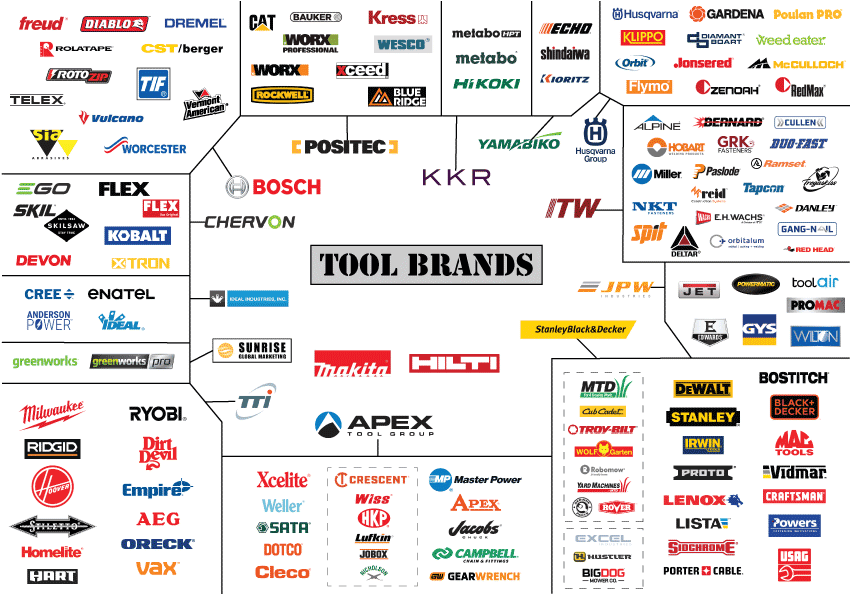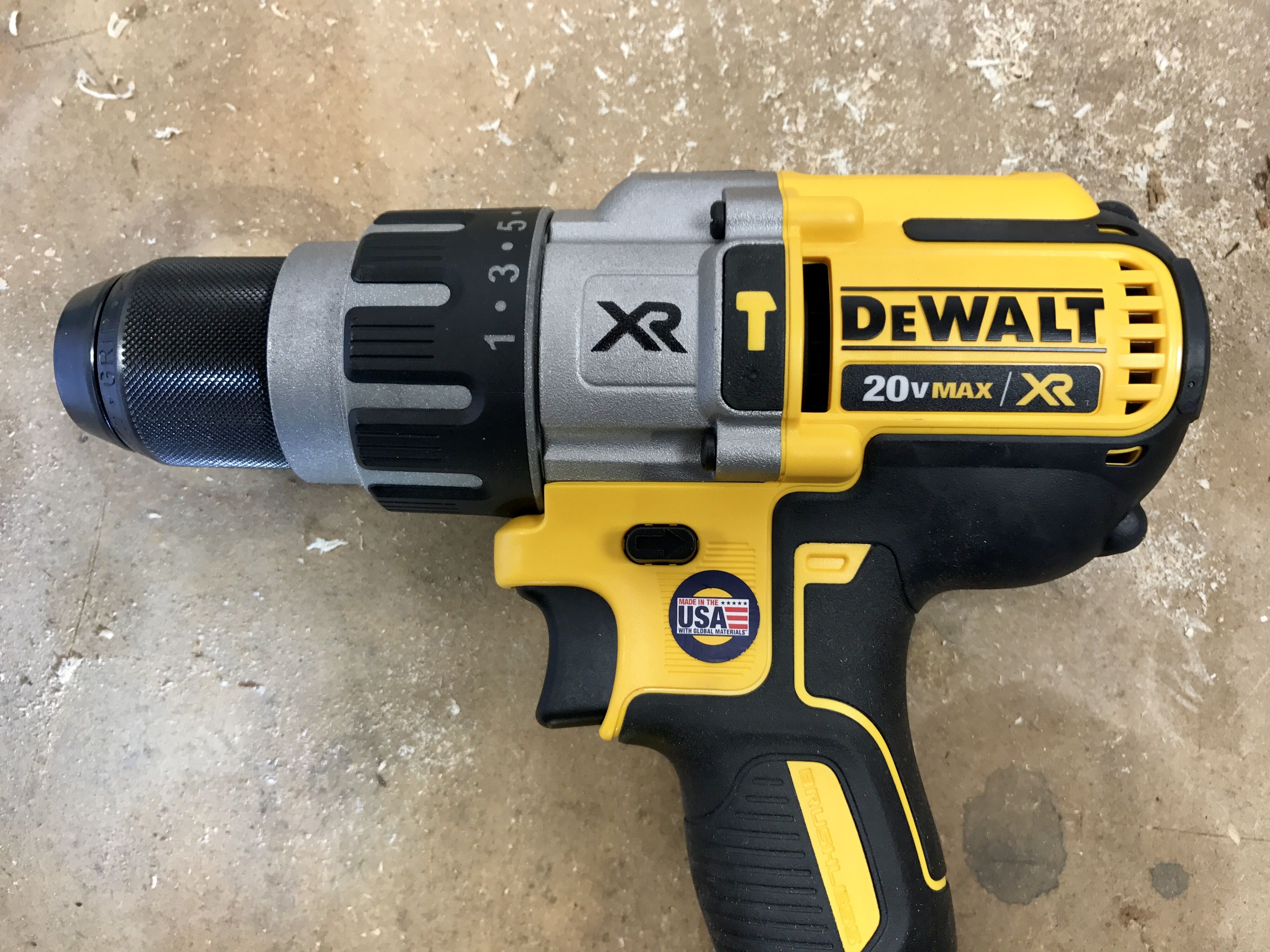Curious to know where power tools are made? Wondering about the origins of these handy devices that make DIY projects a breeze? Well, you’re in the right place! In this article, we’ll explore the fascinating world of power tools and discover where they are manufactured. So, let’s dive right in!
When it comes to power tools, there’s a whole range of countries involved in their production. From the United States to Germany, China to Japan, power tools are manufactured all around the globe. Each country brings its unique expertise, technological prowess, and attention to detail to create high-quality tools that meet the diverse needs of users worldwide.
Understanding where power tools are made is not only interesting but can also shed light on the quality and craftsmanship behind these essential tools. So, buckle up and join us on this exciting journey as we explore the fascinating world of power tool manufacturing. Let’s get started!

Where are Power Tools Made? A Closer Look at the Global Manufacturing Landscape
Power tools have become an indispensable part of our lives, whether it’s for DIY projects or professional construction work. But have you ever wondered where these essential tools are made? From circular saws to drill drivers, power tools are manufactured all around the world. In this article, we will delve into the global manufacturing landscape of power tools and explore the key players, manufacturing processes, and the impact of location on quality and pricing.
Power Tools Manufacturing in Asia
When it comes to power tool manufacturing, Asia is undeniably a dominant force. Countries like China, Japan, and Taiwan have long been known for their expertise in producing a wide range of power tools. China, in particular, stands out as the world’s largest producer and exporter of power tools. Its manufacturing capabilities, cost advantages, and technological advancements have made it a hub for both domestic and international brands. Japanese manufacturers, on the other hand, have gained a reputation for their precision engineering and quality. They are known for producing high-end power tools that are revered by professionals worldwide. Taiwan, with its strong manufacturing infrastructure and skilled workforce, is also a significant player in the power tools market.
However, it is important to note that not all power tools from Asia are equal in terms of quality. While some brands prioritize innovation and quality, others focus on mass production and cost-cutting. Therefore, it is crucial for consumers to research and choose reputable brands that offer reliable and durable power tools.
European Power Tool Manufacturing Excellence
Europe has also established itself as a center for power tool manufacturing, known for its craftsmanship and attention to detail. Countries like Germany, Switzerland, and Italy are renowned for producing high-quality power tools that are synonymous with precision and durability. German manufacturers, in particular, have a long-standing reputation for engineering excellence, and their tools are highly sought after by professionals worldwide. These European manufacturers often prioritize innovation, ergonomics, and sustainability, resulting in power tools that offer superior performance and longevity.
Additionally, European manufacturers adhere to stringent quality control measures and standards, ensuring that every power tool meets strict criteria before it reaches the market. This emphasis on quality has enabled European brands to maintain a strong foothold in the power tools industry, even amid competition from Asian manufacturers.
American Power Tool Manufacturing Heritage
The United States has a rich history of power tool manufacturing, with iconic American brands like Milwaukee, DeWalt, and Makita leading the way. While the manufacturing landscape has evolved over time, with some production outsourced to Asian countries, American manufacturers continue to innovate and develop cutting-edge power tools. The emphasis on ruggedness and durability, combined with advanced features and technologies, sets American power tools apart in the market. These manufacturers often cater to professional tradespeople and enthusiasts, offering reliable tools that can withstand demanding job site conditions.
Moreover, many American power tool brands remain committed to domestic production, contributing to the local economy and supporting American workers. By combining efficient manufacturing practices with rigorous quality control, American manufacturers strive to provide customers with durable and high-performing power tools.
The Role of Location in Power Tool Manufacturing
While the location of power tool manufacturing plays a crucial role in terms of cost, quality, and innovation, it’s essential to note that not all power tools from a particular region are equal. Factors such as the brand reputation, manufacturing processes, and the standards followed by individual companies are equally significant. Ultimately, it is the commitment of manufacturers to deliver quality products that determines the reliability and performance of power tools, regardless of where they are made.
Consumers should always consider the reputation and track record of the brand, as well as scrutinize product reviews and certifications. By doing thorough research and investing in reputable brands with a history of manufacturing excellence, consumers can ensure they are getting power tools that meet their needs and expectations.
The Future of Power Tool Manufacturing: Embracing Technological Advancements
As technology continues to advance at a rapid pace, the power tool manufacturing industry is not left behind. Manufacturers are continually innovating and integrating new technologies into their products to enhance performance, convenience, and safety. Here are three key areas where technological advancements are shaping the future of power tool manufacturing:
1. Smart Power Tools for Enhanced Efficiency
The dawn of smart power tools brings a new level of efficiency and connectivity to the industry. These tools can be wirelessly controlled and monitored, allowing users to adjust settings, receive real-time data, and track usage patterns. Smart features like automatic speed adjustments, tool diagnostics, and performance analytics enable professionals to optimize their workflow and minimize downtime. With the integration of Internet of Things (IoT) technology, the future of power tools lies in this interconnected ecosystem.
2. Cordless Tools with Advanced Battery Technology
Cordless power tools have become increasingly popular due to their convenience and maneuverability. The development of advanced battery technology, such as lithium-ion batteries, has revolutionized cordless tools by improving runtime, reducing weight, and increasing power output. Manufacturers are continually striving to enhance battery performance, charging speed, and overall efficiency to meet the demands of professionals who rely on cordless tools for their work.
3. Integration of Artificial Intelligence (AI)
Artificial Intelligence (AI) is gradually finding its way into the power tool industry, introducing automation, predictive maintenance, and enhanced user experiences. AI-powered tools can analyze usage patterns, predict tool failures, and even suggest optimal settings based on the task at hand. This integration of AI not only enhances productivity but also streamlines operations by reducing the likelihood of errors and minimizing human intervention.
Conclusion
Understanding where power tools are made provides valuable insights into the global manufacturing landscape and the factors that influence quality and performance. Asian countries like China and Japan dominate the production of power tools, while Europe and the United States have their unique manufacturing strengths and specialized markets. The location of manufacturing does play a role, but ultimately, it is the commitment to quality and innovation by individual brands that determines the reliability and performance of power tools. As technology continues to evolve, the future of power tool manufacturing lies in smart tools, advanced battery technology, and the integration of artificial intelligence, all aimed at enhancing efficiency and user experience.
Key Takeaways: Where are power tools made?
1. Power tools are manufactured in various countries around the world.
2. Some popular countries known for power tool production include China, Germany, Japan, and the United States.
3. Different brands may have their manufacturing facilities in different locations.
4. It’s important to research and choose power tools from reputable brands that prioritize quality and safety.
5. Understanding the origin of power tools can help in making informed purchasing decisions.
Frequently Asked Questions
Introduction: Power tools are an essential part of various industries and DIY projects. But have you ever wondered where these tools are made? Let’s explore the manufacturing process and find out more about where power tools are produced.
1. How are power tools manufactured?
Power tools go through a detailed manufacturing process to ensure they meet safety standards and offer optimal performance. The production starts with the design phase, where engineers create blueprints and specifications for the tools. Once the design is finalized, the components are sourced and tested for quality. Assembly lines and automated machines are then utilized to put the pieces together and create the power tools. After assembly, rigorous testing is conducted to ensure they function properly and are safe to use. Quality control checks are carried out at various stages to maintain high standards.
2. Which countries manufacture power tools?
Power tools are manufactured in various countries around the world, with different regions specializing in different brands. Some of the leading countries in power tool manufacturing include Germany, the United States, China, Japan, and Taiwan. Germany is known for its precision engineering and high-quality tools, while the United States has several established brands with a long history in manufacturing power tools. China has become a major player in power tool production due to its large manufacturing capabilities, and Japan and Taiwan are known for their technological innovations in the industry.
3. Are all power tools made in the same country as the brand’s headquarters?
Not necessarily. While many power tool brands have their headquarters based in a certain country, the manufacturing of their tools may not always take place there. To lower production costs or take advantage of specialized manufacturing capabilities, brands often outsource manufacturing to other countries, even if their headquarters are located elsewhere. For example, a brand headquartered in the United States may produce their power tools in China to benefit from cost-effective production processes. It’s important to research the manufacturing location of the specific brand and model you’re interested in.
4. What factors determine where power tools are made?
Several factors influence where power tools are made. One key factor is the cost of labor and production. Countries with lower labor costs, such as China, may attract manufacturers looking to produce tools at a lower cost. Additionally, countries with established manufacturing infrastructure and skilled labor force often become hubs for power tool production. Proximity to raw materials and supply chains is also important, as it can reduce transportation costs and increase efficiency. Companies also consider factors such as government regulations, intellectual property protection, and market demand when selecting manufacturing locations.
5. Can the country of manufacture affect the quality of power tools?
The country of manufacture can have an impact on the quality of power tools, but it is not the sole determinant. Brands with stringent quality control measures can produce high-quality tools regardless of their manufacturing location. However, countries with a reputation for precision engineering and strict quality standards, such as Germany and Japan, are often associated with the production of high-quality power tools. It’s also important to remember that the quality of power tools can vary even within the same brand, as different models may be manufactured in different facilities. Researching user reviews, ratings, and certifications can provide insights into the quality of specific power tool models.

Who Owns Your Favorite Power Tool Company? [2023]
Summary
Power tools are made in various countries, including the United States, China, and Germany. Some brands, like DeWalt, are known for manufacturing their tools in the USA. However, many power tools are produced in China due to cost advantages. It’s important to check the label or product information to determine where a specific tool was made.
When purchasing power tools, consider the quality of the brand and read customer reviews. Although some tools made in China may have lower prices, they may not always be as durable or reliable. Ultimately, the choice of where power tools are made depends on individual needs and preferences.
